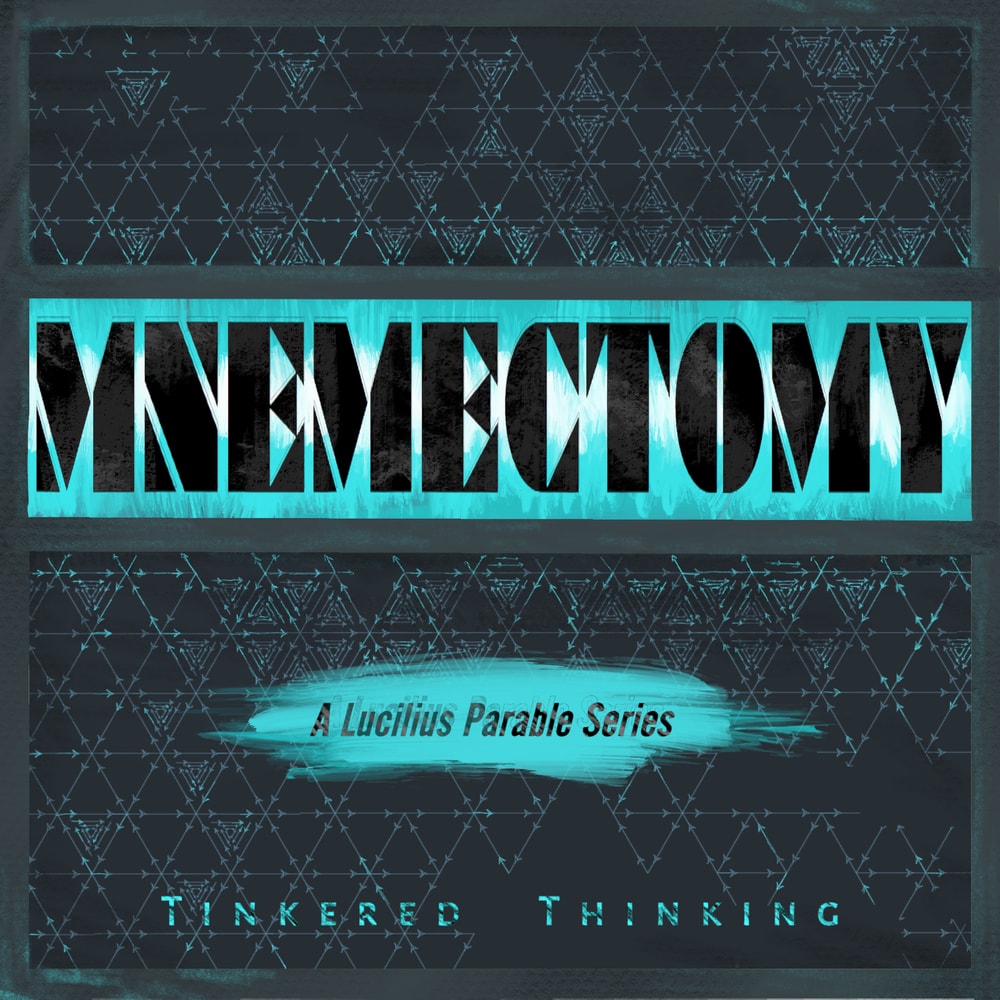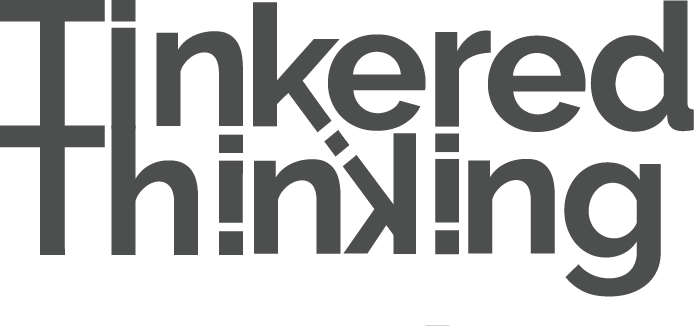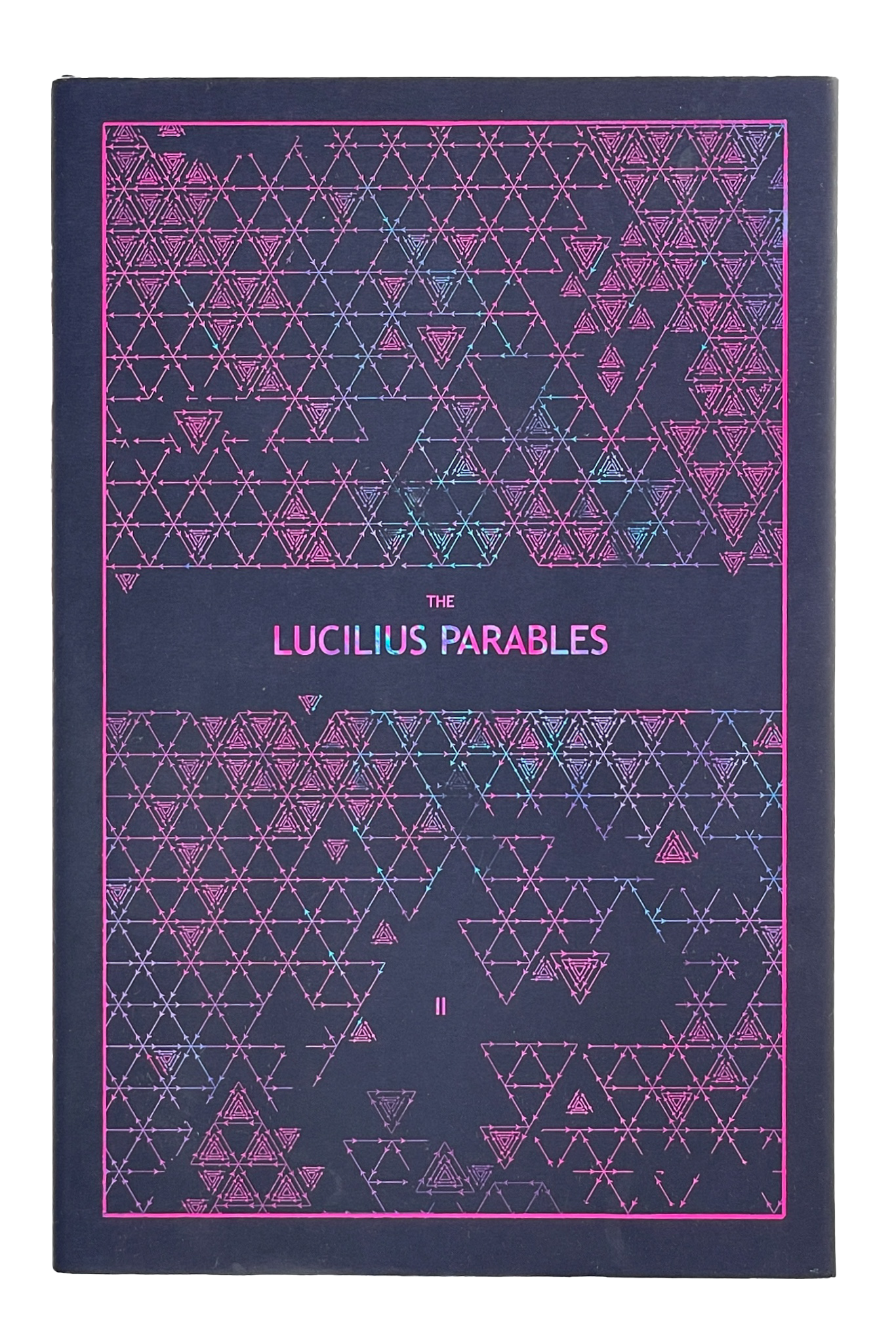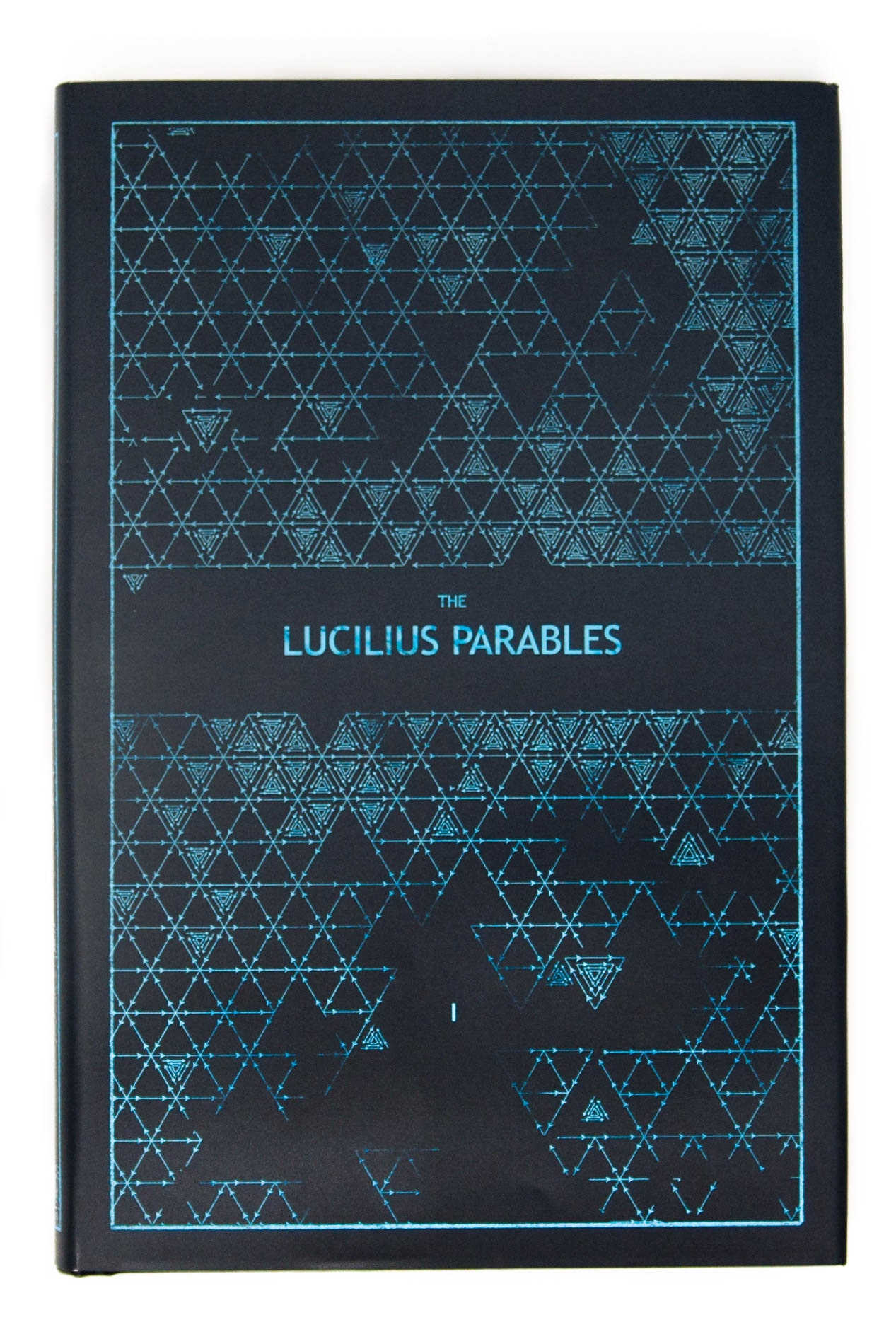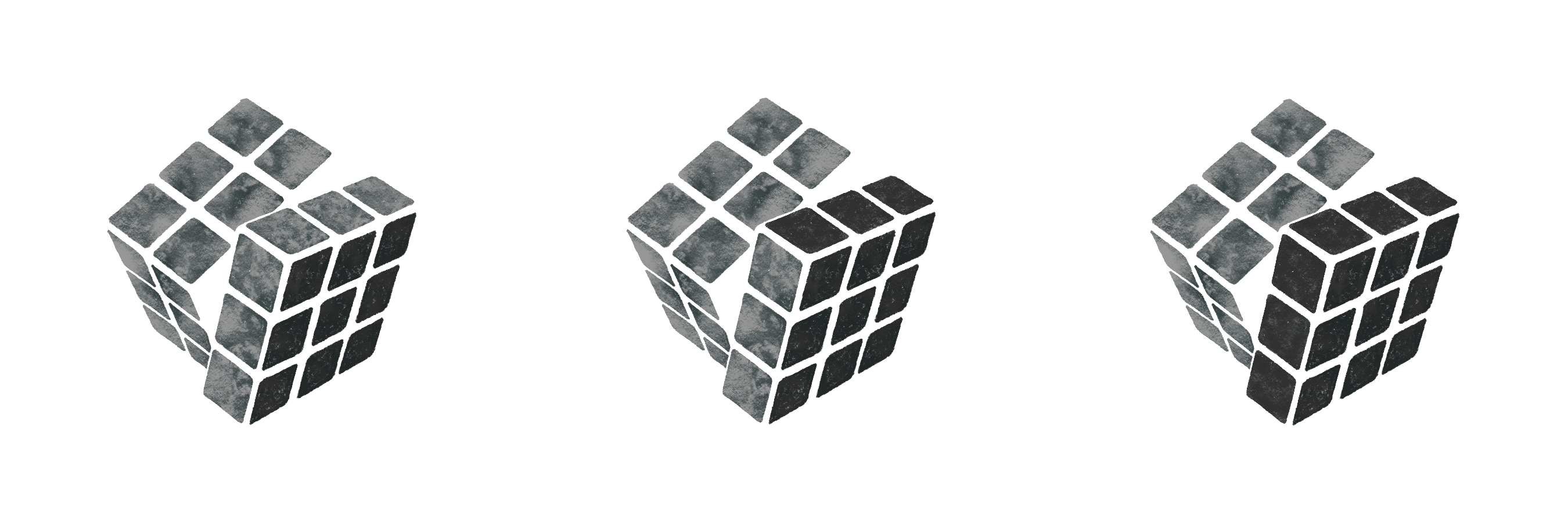Daily, snackable writings to spur changes in thinking.
Building a blueprint for a better brain by tinkering with the code.
subscribe
rss Feeds
SPIN CHESS
A Chess app from Tinkered Thinking featuring a variant of chess that bridges all skill levels!
REPAUSE
A meditation app is forthcoming. Stay Tuned.
A LUCILIUS PARABLE: LUCILIUS.EXE HAS STOPPED WORKING, SYSTEM FAILURE
November 4th, 2018
Sometime in the mid-21st century, at a point when Artificial Intelligence was becoming quite advanced but had not yet reached what many refer to as the ‘Singularity’, Lucilius decided to try an experiment which he forever regretted.
During his daily meditations, Lucilius had become very proficient in the technique loosely referred to as ‘noticing’. All this really entails is simply noticing what one is thinking about. This is often purported as a useful technique for defusing negative thoughts and emotions for beginner meditators. It’s often said that the angry mind aware of it’s anger ceases to be angry, and this is generally at the core of noticing one’s thoughts and emotions at such a level of meditation.
After years of meditating and practicing such noticing techniques, Lucilius started to incur a strange instance of noticing the act of noticing. The technique seemed to be turning on itself as Lucilius slowly realized during his meditations that the instance of noticing was in of itself another object of consciousness to be noticed. Lucilius suspected that there was a brief moment before the second instance of noticing when his mind was achieving a sort of blank calmness that is perhaps the most beneficial aspect of the practice. But the space was a brief and subtle one and Lucilius could not explain the experience without ruining it with words.
Lucilius was curious about the physical neural reality of this instance, but neural imaging was lagging behind in relation to the development of Artificial Intelligence.
So Lucilius designed a little experiment. He realized that there was a limit to how much noticing of noticing of noticing his own human brain could do, so he decided to do a cloned merge with an artificially intelligent computer framework to further probe his curiosity.
Lucilius used a program to clone the thought patterns of his own brain and after a merge with a low-level artificially intelligent system, he directed that second cloned brain to meditate and notice the noticing of the noticing.
Lucilius thought he was rather clever, designing this experiment and smiled as he pressed the enter button to initiate the whole process.
Then all went sour.
Having learned some programming over the years, Lucilius was fairly certain that what happened in the instant he pressed the enter key was a kind of infinite loop. For years afterwards he would think of this moment and rephrase it as an infinite regression.
The screen flashed with Lucilius.exe has stopped working.
For years he tried to imagine the state of the cloned brain inside the computer program and wondered. Did if feel pain in that moment? He was of the opinion that he had effectively overloaded the whole experiment, and with electricity still running through everything, he wondered what the subjective experience of his cloned self might have been.
Lucilius would always suspect that it was a kind of infinite pain he had inflicted on a form of himself and felt remorse and regret every time he remembered the experience.
Little did he know, what had actually happened in the experiment was unnoticeable in the same way that Lucilius could not seem to capture the moment before the second noticing when he suspected his mind was calm and blank.
The infinite regression of noticing had indeed happened inside the computer program, but the aggregated experience of the brief moments of calm blankness compiled like the negative space of a pinpricked curtain held before bright sunlight. The calm blankness eventually crippled the noticing function by mere obsolescence. The program as a whole failed at that point because it was effectively a noticing program. What Lucilius never knew, is that the state of his cloned mind experienced a pure form of nothing in those last moments before he pulled the plug on the machine. It was indeed a perfect way to go.
HEAVE-TO
November 3rd, 2018
The last episode of Tinkered Thinking explored the image of visibility at sea during a storm and when things are calm. Our ability to see and notice subtle things in the distance is ultimately dependent on how calm the water is, and the water in such an analogy is the emotional state of our mind. When we are overcome with strong emotions, our ability to notice subtle details effectively goes out the window.
But angering events, depressing, frustrating, and disappointing events along with all manner of disheartening experiences are possible and potentially around the corner. We cannot control the storms that may come across the water, so we are faced with a different question that resides in sync with visibility: how do we handle ourselves in a storm?
Here we get literal with the analogy. Storm tactics and strategies have been studied and developed since we first got the idea to hop on some floating log and go for a ride. Strangely, even after millennia of experience with storms, the prevailing wisdom of what to do in a storm is not good. Lin and Larry Paradey’s book ‘Storm Tactics’ goes into great detail about the history of why this might be the case, and they present alternative hurricane-tested tactics for what to do at sea. It may seem strange to go into such detail for an analogy, but it proves useful.
The prevailing wisdom for a long time was to run with the storm. This means, put the storm that is coming your way behind you and try to run in front of it. For all intents and purposes, it’s good to have the idea that it’s nearly impossible to outrun a storm at sea, unless it’s just brushing past you which is a situation that has little use here. Running from a storm that will catch up and pass you simply means that you will spend the maximum amount of time in the storm. It also means that waves are hitting your vessel from the rear which, given enough time, will absolutely result in a broach, aka. your boat does a very uncomfortable summersault. Not fun.
The Paradey’s outline a much different approach. It’s long been a practice in nautical tradition to heave-to. And what this means is to turn around, face the storm, and then arrange the sails in such a way that a cancelling force occurs. It’s a strange, somewhat counter-intuitive way to essentially park your boat or ship in the middle of a storm. Unfortunately not all vessels have the design to pull off this maneuver very effectively. The Paradey’s prescribe deploying a small parachute, often called a sea-anchor, or a drogue off of the bow and rigged so that it pulls at an angle. This slows the boat down even more. Keep in mind that the boat is being pushed by oncoming waves, and heaving-to is the technique to park and slow the rate of being pushed while reducing the risk of being totally swamped by a wave. The drogue, or parachute reduces this risk drastically and it seems through experimentation that anything short of a wave that is breaking is mitigated by such a tactic. That’s the short and sweet technicalities of it. So how does it relate to storms of the mind?
Running from a storm, as mentioned ensures that we’ll spend the maximum amount of time in that storm. With the storm at our back, it’s a sort of denial. Literally running from a storm can be akin to running from one’s fears or one’s problems. Doing so perpetuates the discomfort in both situations, and usually results in a worse outcome.
Heaving-to is akin to turning and facing one’s fear or problem without denial. Doing so the first time might be incredibly scary and require a tremendous amount of faith in the story of the technique related above, because: all useful knowledge that we might pass among ourselves that can be practically implemented to greater result is, at the end of the day, just a different story. Believing that story can be difficult, often because what is rational does not always feel intuitive, and our intuition is the seat of fear. But facing one’s fear almost always decreases that amount of time that we are uncomfortable. Like a scary movie, the anticipation of a potentially negative event is always the worst part.
The other less obvious benefit of heaving-to as opposed to running from a storm is the mental space it creates. When running from a storm, one must always be at the helm, steering the boat perfectly in order to keep from broaching. This is not only exhausting but frankly, more importantly, you can’t do anything else that might help your situation. But while heaving-to, the helm is locked in position, and the boat is moving much more slowly against the waves. An individual on a boat that is in the heave-to position can move to different parts of their vessel. This frees up their resources, allowing one to perhaps go below for a nap, or look at a chart to check for lee shores, or simply put on a pair of goggles and gaze out at the magnificent power that the sea and the sky can produce together. Such a perspective can be used to fine-tune the set up for heaving-to, tinkering with different variations to see what works best.
This is a quick description of the actual practical conditions of heaving-to in a vessel at sea during a storm. The image can be imported as an analogy into the changing environment of our mind.
When something happens and our minds are thrown into a storm of emotion, what would it mean to heave-to in this respect?
One of the Stoics, Marcus Aurelius is often quoted, having written
“be like the rocky headland on which the waves constantly break. It stands firm, and round it the seething waters are laid to rest.”
Perhaps Mr. Aurelius was not intimately familiar with the open-ocean possibilities of mitigating such seething waters, but it’s doubtful he would not have seen the similarities.
Perhaps even more apt is a line from Joseph Conrad, who when describing what entails a good boat wrote that it should be “like a seabird going to rest upon the angry waves… will lay out the heaviest gale that ever made you doubt living long enough to see another sunrise.”
The juxtaposition of seabird and rocky headland is a juicy one. A rocky headland is clearly a strong entity, but a seabird? The image here evokes a powerful and strong strategy as opposed to being physically strong.
And so to should we strive to find a powerful mental strategy for when storms arise. What is our strategy for ‘heaving-to’ when storms of emotion come upon us? How do we essentially ‘park’ in the middle of that storm and free our mental resources from the grips of that storm in order to see what the next useful step might be?
Many good pieces of such strategy reside in the writing of the stoics, and it does well to remember that much of behavioral economics research has gone to show that things we fear happening or losing effect us much less than we think they will. (Cue the scary movie where the anticipation is the worst part.)
But these are, again, stories that we must have the courage to believe and somehow figure out how to implement, which can be difficult in the moment. We’ve all heard good advice, but implementation seems to be in a different medium altogether. Perhaps the most powerful thing we can do in order to develop a strategy for heaving-to in the emotional moment is to study the present intimately, and this is done primarily through meditation.
Meditation is a tool that can be implemented like a drogue or sea-anchor, or a sail configuration to park our boat. Meditation, with enough practice, gives the mind an ability to slow down and separate ourselves from the emotion that is overtaking our being. We are not totally divorced from it, we simply change our relationship to such emotions, in much the same way that the ship that heaves-to does not magically lift itself out of the water, but simply changes its relationship to those oncoming waves.
But just as the good sailor spends lots of time at sea, watching the waves and feeling the wind, we need to spend the necessary time watching our mind, seeing how it works, tinkering with our perspective of it and feeling around for an escape hatch - a strategy that can give us more visibility. This is, in essence what the practice of meditation entails. And eventually, with enough practice, meditation becomes our drogue in the storm, because any and all phenomena can become an object of meditation. Even the worst moment of life can be grasped by the meditating mind and held in relation to our mind in a way that effectively makes one’s mind like that seabird, comfortably waiting out the storm, bobbing along peacefully over the angry waves.
This episode references Episode 201: Visibility
VISIBILITY
November 2nd, 2018
Imagine being out at sea when it is perfectly still, like a glassy mirror from every point on the horizon beneath a clear blue sky. The visibility couldn’t be better in this sort of situation. We can notice anything for as far as the eye can see. Even the tiniest blip at the edge of the horizon could be seen.
Now imagine the same ocean in the middle of huge storm. Even if we have never been at sea in a storm, we can close our eyes and imagine gargantuan waves, like mountains scraping across the face of the world. Imagine being in the middle of that terrifying place. Perhaps on a small boat, sliding down into the deep troughs, being overcome again and again by the next wall of water.
What’s the visibility like in the place?
Perhaps for the briefest of moments at the crest of a wave we are high enough to look around and see the ocean like a mountain range of grey walls moving with hissing wind. But at best this is only for the briefest moment, and most of the time we are stuck tumbling down into a trough between waves, where the only visibility is up, into spitting rain.
It’s a ripe analogy to see the mind as this ocean of water. The emotions we feel are like the motions of that water. When we are caught up in some welling, intense emotion, it’s as though we are deep in the trough between waves, and each new one is not seen as an opportunity to perhaps get a little more visibility, but an ordeal to try and survive. On the contrary, when we are calm, and our minds are still, we can see much more clearly.
It may be widely believed that it’s our emotions that make us human. Some like to point out our compassion and empathy as core to our humanity, but anyone who has ever had a kind pet, like a cat or a dog can recognize similar lovely emotions in such animals. Unfortunately, our emotions are a shorthand system for analyzing and reacting to the world, and just as a dog can snap at someone if pushed too far, so too is the case with humans. It’s not our emotions that makes us so human, but our ability to put emotion aside, and notice important details that we are blind to while in the throes of emotion. Having clarity of mind simply expands our field of mental vision. Such calmness gives us the space to notice a small thought, barely audible that has been trying to nudge us in a better direction, a more interesting direction.
It can easily be argued that such big emotions may be very useful. They might be described as large attempts on the part of some sort of subconscious to alert us to some sort of problem or inequity in life that we need to deal with. But most of us get too caught up in the sounding of the alarm to actually understand what the alarm is for.
Calmness and clarity of mind is the place we should always strive to return to. It’s unrealistic to expect it perpetually all the time, but it’s not a fool’s errand to try, because trying gets us there more often than not. More importantly is how do we handle ourselves in the storm? Do we just tumble into troughs? Or is there another way? Can we compose ourselves to deal with such whims of fate, and take advantage of those brief moments at the high crests of waves when we can gain some visibility and perhaps notice something that might help our situation.
THINK AGAIN
November 1st, 2018
How good is your first impression, your first thought, your first conclusion? How often does our first thought lead us down an unwise path. How often do we find ourselves needing to revisit our thinking?
Perhaps this is because we are rarely thinking during that first impression or coming to that initial conclusion. We are using a shortcut to thinking. We are feeling things out. Going with our gut. And while going with one’s gut is perhaps rightfully touted as good advice near and far, it is not always the best thing to do.
Often we would do best to
think again.
But we shouldn’t think again in the same exact way. Doing so is either a form of practice, like trying to play a piece on the piano as well as we did last time. Or it’s insanity. Like trying to get through a brick wall by banging our head against it over and over and over.
To, think again, is a akin to backing away from the wall and looking for a door, or gauging whether it’s possible to climb or dig under or, oh hey, here’s a box of dynamite.
This is the two-hundredth episode of Tinkered Thinking. It now spans over 150,000 words which is about as big as a 600 page book, and all of it is geared towards exploring ways to think again. Or perhaps, considering our first impression and our initial conclusions are really based on feeling and not thinking, the advice to think again, is really to think for the first time.
We are on autopilot for so much of our day and so much of our life, being pushed around by our own feelings, to chase this future or resist that past, and so much of this ragdoll treatment that we experience at the hands of our days could be soothed by changes, often startlingly simple changes, in thinking. Think of an orchestra with a grand piano that has one particular note central to the piece that is out of tune on the instrument. It throws the whole experience off, and yet the fix is just a tiny bit of tinkering, a small tweak needed in just the right spot, and then suddenly everything good that was going on with the rest of the orchestra is noticeable. While this analogy for our mental worlds is absurdly simplistic in the face of all that we have to deal with as thinking, feeling humans, it should not go without some utility to our way forward. So many quaint motivational sayings hinge on a similar chord, whether they be accurate or not. We’ve all had the experience of walking around with a small jagged pebble in our shoe and for whatever strange reason we can go a surprisingly long time enduring such pain before our executive brain gets the picture and we stop, take off the shoe and shake out the annoyance. The difference can be immense, and so too can the difference of effect be immense if we think again, or simply give our minds space to think in a different way, down a different path, exploring a different experience.
That famous advertisement to ’think different’ might very well be a call to think for the first time since our emotions are usually guiding us through our day, and consequently through life.
Thinking deeply, or differently can lead to some surprisingly counter-intuitive places, meaning that something that seems to make sense might not feel right, and suddenly we find ourselves rationally compelled to go against the flow of everyone else, including who we were before we paused to think about things.
Much recent research in behavioural economics seems to point out that our intuition is very often quite wrong. This doesn’t mean that it can’t get better. Quite the opposite, our intuition can get better, but only if we thoughtfully pause when we discover it is actually is, instead of plowing ahead like some dumb beast going over a cliff.
While this platform finds more value exploring concepts at a remove from current events, it is hard not to wonder how much rhetoric would never see the light of day if the tweeter, or newscaster, or politician thoughtfully paused before speaking or clicking or tapping, or whatever means of communication has them by the throat.
So often, that is the either the cure to a present problem, or the first step to finding a solution: thoughtfully pausing.
It is in essence, taking a break from our impulse system to actually think.
Like a muscle, its one of the few things that actually gets better and stronger the more it is used.
Best to think again about leaving it on the backburner.
This episode references Episode 23: Pause, Episode 44: Autopilot, Episode 73: Plow Ahead.
STRESSFUL SITUATION
October 31st, 2018
Do we admire other people who can handle stressful situations. Do we look at their job and listen to stories from their life and sit back in relief that we do not have to deal with such things? Do we shudder at the idea of being subjected to such a life?
When it comes to such stressful situations, where exactly is the stressful part?
Stress is something we feel. In fact the subjective experience of stress is created primarily by a steroid hormone called Cortisol.
So where exactly is the stress in a stressful situation? It’s in the body and the mind.
It’s not that a situation is full of stress, it’s that we become full of stress while in a particular situation.
Such a distinction is perfectly obvious, but there is a subtle shift we must note. By describing an external circumstance as stressful, we are defining our experience as one that is controlled by external circumstance. This is unwise, because it leaves our wellbeing to the whims of circumstantial fate and denies our own agency with regards to deciding exactly how circumstances are going to affect us.
Even though they might seem like equivalent statements, saying ‘I am stressed while in this situation’ and ‘this is a stressful situation’ are actually worlds apart. The difference in perspective contains within each a different source of agency and power. ‘I am stressed while in this situation’ can turn into ‘I am calm in this situation’ much more efficiently and quickly than if we try to change the outside world to be less stress inducing. It’s also much more difficult to perform to any degree while stressed and therefore our efforts to change a situation so that it does not stress us out will take longer and be less efficient than compared to if we were go to the root of the problem and try to mitigate the stress within ourselves first, before turning our attention to a situation that might benefit from our efforts.
At the end of the day it’s simply an inaccurate description to describe a situation as stressful. Such a situation would have to have cortisol spilled on the ground or something ridiculous like that. Such an image might seem eye-rollingly ridiculous and the distinction might seem small. But, is the distinction between two sides of a coin small? Certainly they are very very close together. We could theoretically have an extremely thin coin and say that the two sides are insanely close to one another, but does this in any way effect the fact that such sides face in completely opposite directions? If a coin is flipped to see who goes first in a sports game or who wins a bet, we certainly don’t expect the loser to claim a tie because the sides of the coin are so close together.
This is why we would do well to be a little more mindful about the way we narrate our experience to ourselves. And indeed, mindfulness meditation is a clinically validated way of down regulating the production of cortisol, that hormone that makes us feel stressed during certain situations.
Whether it be a daily practice of meditation to influence our hormonal production, or a tinkered way of thinking about reality in order to completely strip all situations of any intrinsic stressfulness, we cannot leave our future emotional states to the whims of fate, like some coin toss. We would do well to think of who we will become tomorrow, or next week, next month or ten years from now. Will that person look back on our actions today and feel loving gratitude? Best to pick the right side of practice and perspective, and start nailing that sucker down as a gift for tomorrow.
-compressed.jpg)
